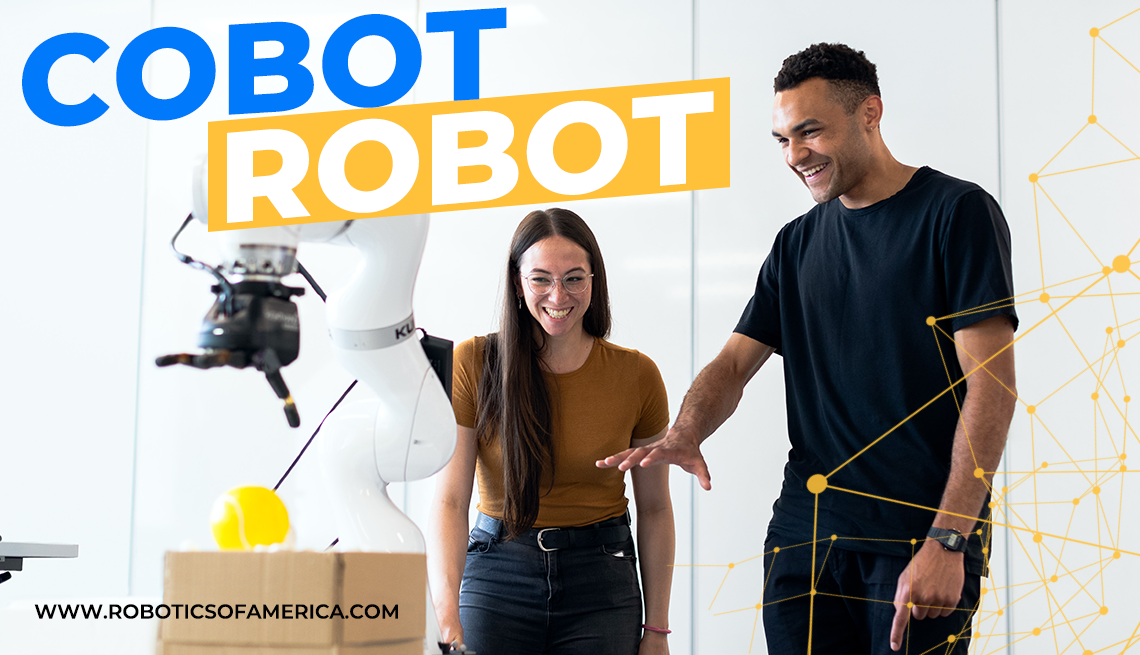
An Introduction to the Cobot Robot
If you're interested in robotics, you might have heard of the cobot robot. It’s a robot that is benefiting many companies across diverse industries. It can operate alongside human co-workers thanks to advanced automation. This article will explore the key benefits associated with many cobot robots. Are you ready to learn? Let’s get started.
So, What Is a Cobot Robot?
A cobot robot is a collaborative robot. This means that it can interact with humans that occupy the same physical space. The concept might sound like something out of a science fiction novel. But more and more humans are working near various forms of robots. And the cobot robot is the most common robot that humans work with.
What separates the cobot robot from other robots? Most other traditional robots are always separated from contacting humans. But advanced safety measures ensure that humans and cobots can co-exist. The odds of getting harmed by a cobot are almost zero. A variety of factors make cobots safe. Here are some of the most important safety factors:
- Each cobot gets constructed using lightweight materials.
- Many cobots have rounded edges.
- Cobots do not move fast.
- Cobots are not capable of having much force.
- Many cobots use advanced software that includes tons of safety precautions.
- Many cobots have sensors to help prevent accidents from taking place.
The Cobot Robot Appears in Two Forms
Many robotics experts classify each cobot robot into two separate sectors:
1) Industrial cobot robots powered by automation.
These cobot robots operate within industrial environments like factories and warehouses. In the past, industrial robots were always separated from humans. For example, a barrier would get placed in a factory. Humans would be one side. And the robots would be on the other side of the barrier. But cobots are so advanced that many industrial barriers are no longer needed. What is an example of an industrial cobot robot? A logistics cobot. This is a type of robot that transports physical materials within a building.
2) Service cobot robots that assist humans in non-industrial spaces.
A service cobot robot could be in someone’s home or in a school. These cobots are not as common as industrial cobots. But in the future, expect to see domestic cobots in many households. What is an example of a service cobot robot? An information robot. These are robots that provide data to the public in a non-industrial setting. For example, an indoor shopping mall could put service cobots within the building. The cobot would get tasked with answering questions about the locations of stores.
The Four Key Advantages of the Cobot Robot
1) Each cobot robot can get programmed with ease.
Every cobot robot developer uses advanced and patented technology. That technology serves the purpose of assisting users with setting up each robot. This is the case even if someone does not have programming experience. The set-up is fast so that people can start operating their cobots in little time. (There’s more on that later in this section.)
Many recent cobots on the market feature 3D visualization technology. This helps companies move each robot’s arm without any trouble. Say that you have a certain waypoint in mind. The 3D process ensures you reach the waypoint in a matter of seconds. Many cobot developers also sync their software to each cobot. This provides operators with another mechanism for moving the robots. For example, you can input what you want the cobot to do using a tablet device. This is as simple as pressing arrow keys. The cobot then makes physical adjustments in real-time.
2) The set-up time for each cobot robot is fast.
The average deployment time for a cobot robot used to take weeks. Now, thanks to recent tech innovations, it takes hours. In fact, most studies conclude that the average customer set-up time is half of a workday. This allows someone untrained with robots to do three key actions. The person can unpack, mount, and program their cobots with ease.
3) Each cobot robot allows for variations in automation.
It’s a shame that so many people confuse the cobot robot with regular robots. Why? Because most regular robots can only do one key action. But cobots are different. They are lightweight and save a lot of physical space. Plus, you can re-deploy them as many times as you would like. Re-deployment refers to inputting commands into more than one application.
Users can re-deploy most cobots without having to adjust the layout of the production. If you want the cobot to pick up a new process, it’s a piece of cake. Automation allows for the cobot to learn many new processes fast. This leads to plenty of batch runs and line change-ups.
4) The cobot robot has a reputation for being safe.
The cobot robot loves getting its hands dirty. And it loves working under risky conditions. That’s why all the dangerous jobs of your company should go to cobots. This will prevent your human workers from getting injured. Most mainstream cobots get programmed with advanced safety guarding. Their safety systems have gotten tested for years by top researchers worldwide. For example, the German Technical Inspection Association tests the safety of many cobots.
The 4 Types of the Industrial Cobot Robot
The industrial cobot robot interacts with humans across all sorts of worksites. Commercial. Construction. Maintenance. Factory work. Welding. The list goes on and on. But not every industrial cobot is the same. They are often classified into one of the following four types:
1) The safety monitored stop cobot robot.
This cobot robot lives up to its name. How so? Well, safety is its top priority. That’s why this robot is best for processes that limit human-robot interaction. That lack of interaction is what allows the cobot to do its job without harming anyone. But lack of interaction is not this cobot’s only safety feature. Each safety monitored stop cobot has a series of sensors attached to it. What is the purpose of these sensors? To cut off robot-operations when human workers get too close to the cobots.
2) The speed and separation cobot robot.
This cobot robot is very much like the safety monitored stop cobot. Each of them serves as a standard industrial robot. So, what’s the difference between the two cobots? Speed and separation cobots have superb vision abilities. Each of these cobots uses its great vision to slow down a task when a human gets too close. This cobot can also pause operations when an employee is near this industrial robot.
3) The power and force limiting cobot robot.
This is another collaborative cobot robot designed for many different industrial tasks. Each of these cobots feature rounded corners to prevent accidents from taking place. In fact, this cobot features a series of other safety precautions.
For example, the average power and force limiting cobot has collision sensors. The sensors alert the cobot when a human is at risk of colliding with the bot. The machine then shuts down to avoid an accident. This cobot also features a series of force limitations. They are another safeguard against collisions that could lead to injuries.
4) The hand guiding cobot robot.
This is an industrial cobot robot that has its own hand-guided device. What does this mean? A human operator controls how the cobot moves at all times when in automatic mode. During this mode, the robot bases its real-time actions on the operator’s hand movements. There are many advantages to cobot hand guiding.
For example, a cobot can support holding up a lot of weight while an operator moves his or her hand. The copied hand movements make a big difference. They ensure that the cobot is holding the material how the operator intends. This is a much better alternative than having a human hold something that weighs a lot. If that were the case, a stress injury could occur.
Conclusion: The Cobot Robot is Helping All Kinds of Businesses Achieve Success
Isn’t the cobot robot an amazing invention? It seems like something out of a movie script. Yet, it’s already assisting many companies in real life. Business owners can breathe sigh of relief due to the many cobot safety features. But they will also jump for joy once they realize the ROI boosts that these machines can provide. They save companies so many work hours by getting projects done fast. This leads to increased profit margins for businesses in diverse industries.
If you're interested in purchasing a cobot for your business, contact our firm today. Our experts will help you find the most high-quality cobots at the best prices. In the meantime, feel free to browse the other robotics articles on our website. We offer in-depth analysis of related topics such as:
- -cobot manufacturers
- -cobot universal robots
- -cobot robot price
- -collaborative robots
- -universal robots
- -cobot programming
- -cobot vs robot
- -cobot applications

